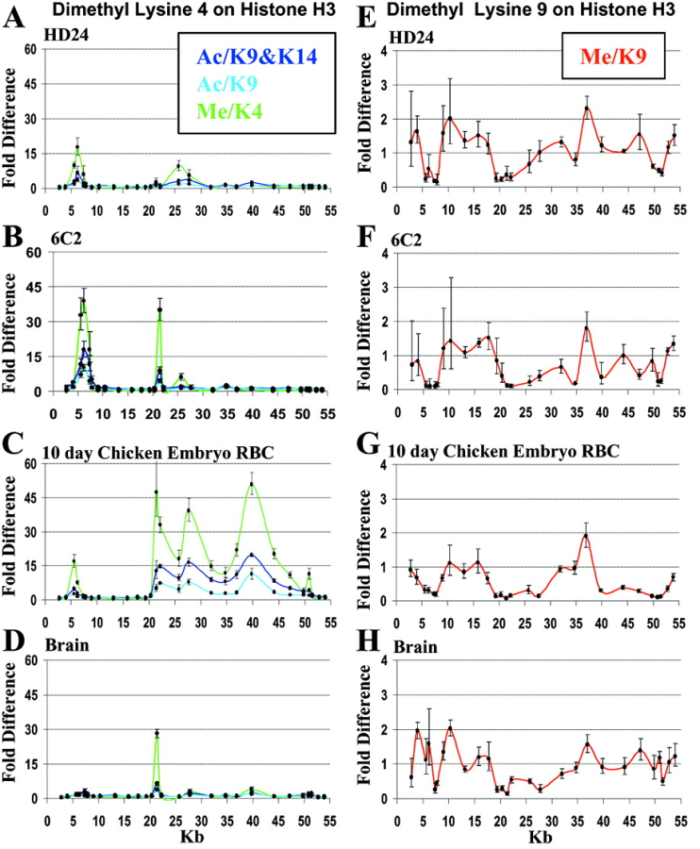Histone H3 acetylation and methylation across the beta-globin locus as a function of erythroid developmental stage.
Keywords
Flag Inappropriate
Delete Content

Histone H3 acetylation and methylation across the beta-globin locus as a function of erythroid developmental stage.
Results of chromatin IP with antibodies to methylated and acetylated lysine sites on histone H3. (A to C) H3 methylated on lysine 4 (Me/K4 in green) at three developmental stages compared with H3 either monoacetylated on lysine 9 (Ac/K9 in light blue) or diacetylated on lysines 9 and 14 (Ac/K9 and K14 in blue). (D) Same for 10-day chicken embryonic brain. (E to G) H3 methylated on lysine 9 (Me/K9 in red) in erythroid cells. (H) Same for brain. Enrichments significantly less than 1 indicate underrepresentation in the IP fraction relative to the abundance of methylated sites in the genome. Each data point indicates the average of three independent PCR analyses of an IP with the standard deviation shown by the error bars.
This image is linked to the following Scitable pages:
Histones not only keep DNA organized, but also help regulate gene expression. How? Scientists are using ChIP and PCR to find out.





















Comments
CloseComments
Please Post Your Comment